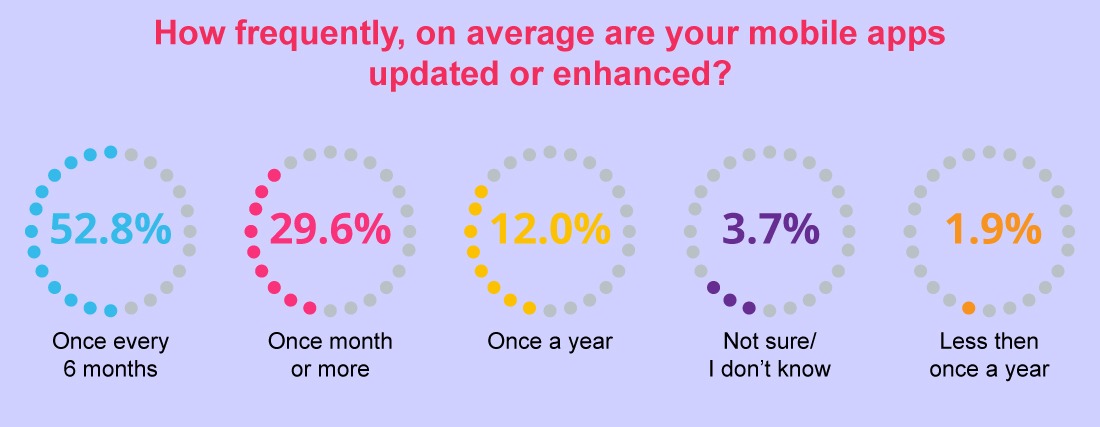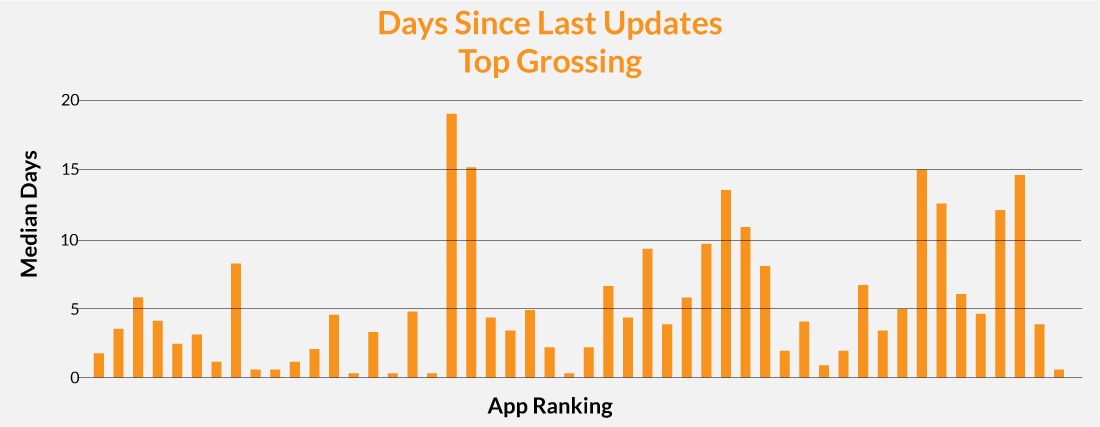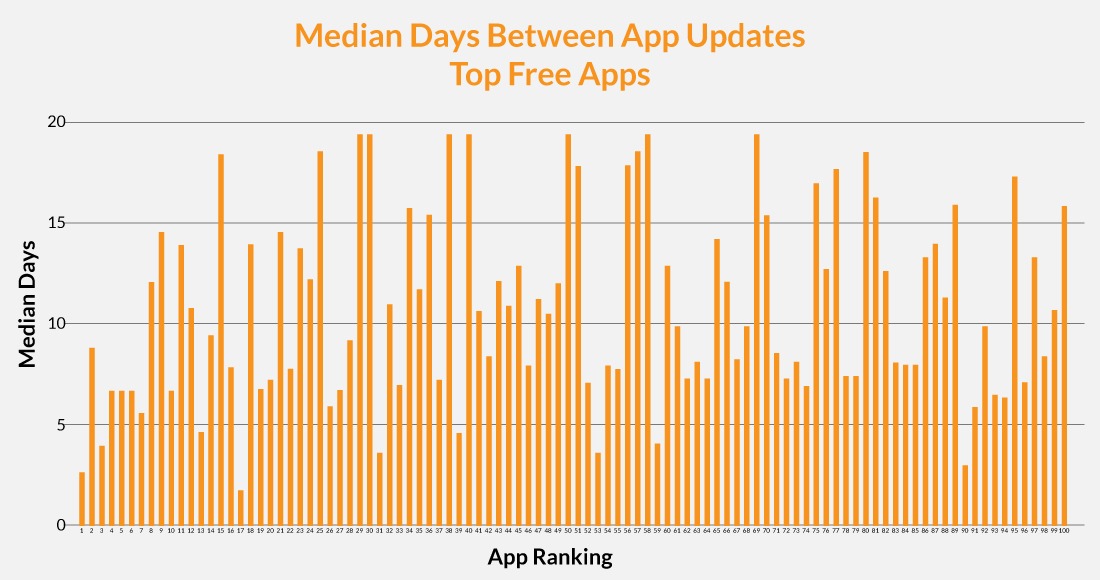Mobile App Update: Even the finest, most widely-used, and long-lived applications continue bringing out updates.
Not only for adding new modifications and features to the program but also for providing patches and bug fixes.
As an app developer, upgrades are simply another part of life.
But how frequently should you update your app, and what should you consider while doing so?
After all, although it’s crucial to solve any apparent faults and bugs with your software, you don’t want to overwhelm your consumers with too many updates.

There are various benchmarks app developers should use to decide when to update their app, which we’ll examine and why time even matters in the first place.
Why Does Timing Matter?
Most app developers recognize that an app is never completely done.
Once it’s put into the world, it’s very much assumed that they’ll need to continue upgrading it regularly to guarantee it remains fresh and operating.
Whether it’s deploying a bug patch, a new feature, or applying more robust security measures, the process is never-ending.
While updatesare vital and people anticipate them, the last thing you want is to be putting out updates every day.
It’s simply poor for user experience.
Why? Sending out too many update requests to users may be exhausting, plain, and straightforward.
It demands them to visit the app store, click on the update button, and then wait around for the app to upgrade before using it again.
Some people won’t even bother, mainly if it appears like a bit of update that won’t influence their user experience.
This is why developers must schedule update releases ahead of time, mainly when introducing new features and compatibility upgrades that correspond with introducing a new OS.

Other updates aren’t always scheduled, such as bug patches and issues with your software.
Typically with these sorts of upgrades, you want to release them straight away if they’re essential, such as an app crashing or a screen not loading.
These errors may irritate and drive away consumers.
Let’s look at how to plan your app update releases properly.
User Input – Mobile App Update
One of the most significant reasons to update your app is due to user feedback.
Which you should continually be seeking to acquire information on how well-received your app is.
A function should be integrated into your software that asks users to rate your app, so make sure you’re checking the reviews they give you in the App Store.
Another strategy to keep ahead of your app releases is to check out the reviews for comparable apps’ features to see what works and what doesn’t before rushing out with your update.
This way, you may continue to improve your features depending on what people enjoy and don’t, preventing a premature update.
Improving the User Experience
It’s crucial to continue producing Mobile App Updates that will enhance the user experience.
You want your app to be new and current, which will assist keep your users.
Still, the ability of messaging applications to enable users to express lengthy, spoken messages instead of typing them out had a significant influence on user experience.
It wasn’t a transitory fad or trend-of-the-day but rather something consumers enjoyed as a new feature.
It makes their life more straightforward, perhaps the most ideal type of update software can make.
Another example of enhancing user experience that you may want to explore in future updates is social media usage to engage people.
Any app may include a Facebook “Like” or “Share” button, but the point is to make full use of social media and utilize it as a tool rather than simply a platform.
Remember, approximately 2.3 billion individuals are active social media users, so you don’t want to neglect it.
Social media may be utilized to share, connect, investigate, and ultimately produce fresh material for your audience.
Putting a regular stream of updates will provide an excellent user experience by keeping your software up to date and continually improving.
Monthly Updates
Every month, updating your app is a reasonable and typical timeline for app upgrades.
As a developer, this offers you a baseline for when to anticipate releases, and it’s often enough to guarantee your product remains current while not bothering consumers.
In other words, it hits the right balance.
Aiming to provide updates at least once a month is an intelligent plan and will keep your material fresh, and although you may update more regularly, you don’t want to surpass three or four updates each month.
Stay Tuned to Trends
The app industry is constantly developing, and what may have been an excellent feature a few months ago may now appear entirely obsolete today.
This also has to do with what’s hot in the app industry and what people care about today.
The expectations for what an app can accomplish are continually growing, particularly for applications that charge consumers to download it.
Look at Snapchat, for example. While their initial round of wacky and charming picture filters garnered a significant following, the firm needs.
To consistently churn out new filters that are fresh and enjoyable to remain ahead and compete with other applications like Instagram that have similar features.
Their face-swap filter may be entertaining today, but monotonous tomorrow, so it’s vital to offer changes to keep your app interesting to consumers.
Mobile App Update – Hitting Milestones
Waiting for significant app milestones—such as a launch anniversary—is another brilliant technique for planning upgrades.
Particularly larger ones that involve feature launches and not simply minor bug fixes.
This may increase excitement around your app and make consumers interested in what’s coming next.
Just as your physical shop could offer a significant sale or makeover to coincide with the anniversary of their debut.
Scheduling significant upgrades for your app can help renew it and promote greater user engagement.
Often, people will download an app and then forget about it over time.
This is a terrific chance for not just launching extensive upgrades to your app with the ability to build anticipation.
Still, it also pushes your development team to maintain your content fresh and up to speed with what’s popular.
Additionally, like brick-and-mortar establishments, it’s also an excellent time to promote discounts and in-app purchases.
You can see how this sort of marketing may incentivize people to come back, and it can even attract new users.

Conclusion
The app environment is continuously evolving, and if you want your app to stay up, you’ll want to think about the information provided above.
Mobile App updates shouldn’t be put out to the public without due thinking, and they also shouldn’t merely concentrate on bug repairs and minor modifications.
Your development team should have a complete plan to effectively capitalize on app update releases to achieve the most significant outcomes.
Our Yugasa Software Labs will help you get started in building your app and includes a technical writeup.
Which would describe how updates and new additions would be carried out, wireframe designs to see your app in action, and user research to guarantee your app reaches the correct audience.
The trick is to think forward. Don’t wait for errors to develop or unhappy people to offer comments.
See what other applications are doing, how their features are being welcomed, and what’s trending so you can update your app in the best manner possible.
The objective is not just to retain users via a robust user experience but bring in new users through periodic, intelligent app updates.
Read More: SIMPLE STEPS FOR MOBILE APP DEVELOPMENT LIFECYCLE























